Ballerinas Maria, Marjorie Tallchief to be honored at Tulsa event featuring Misty Copeland
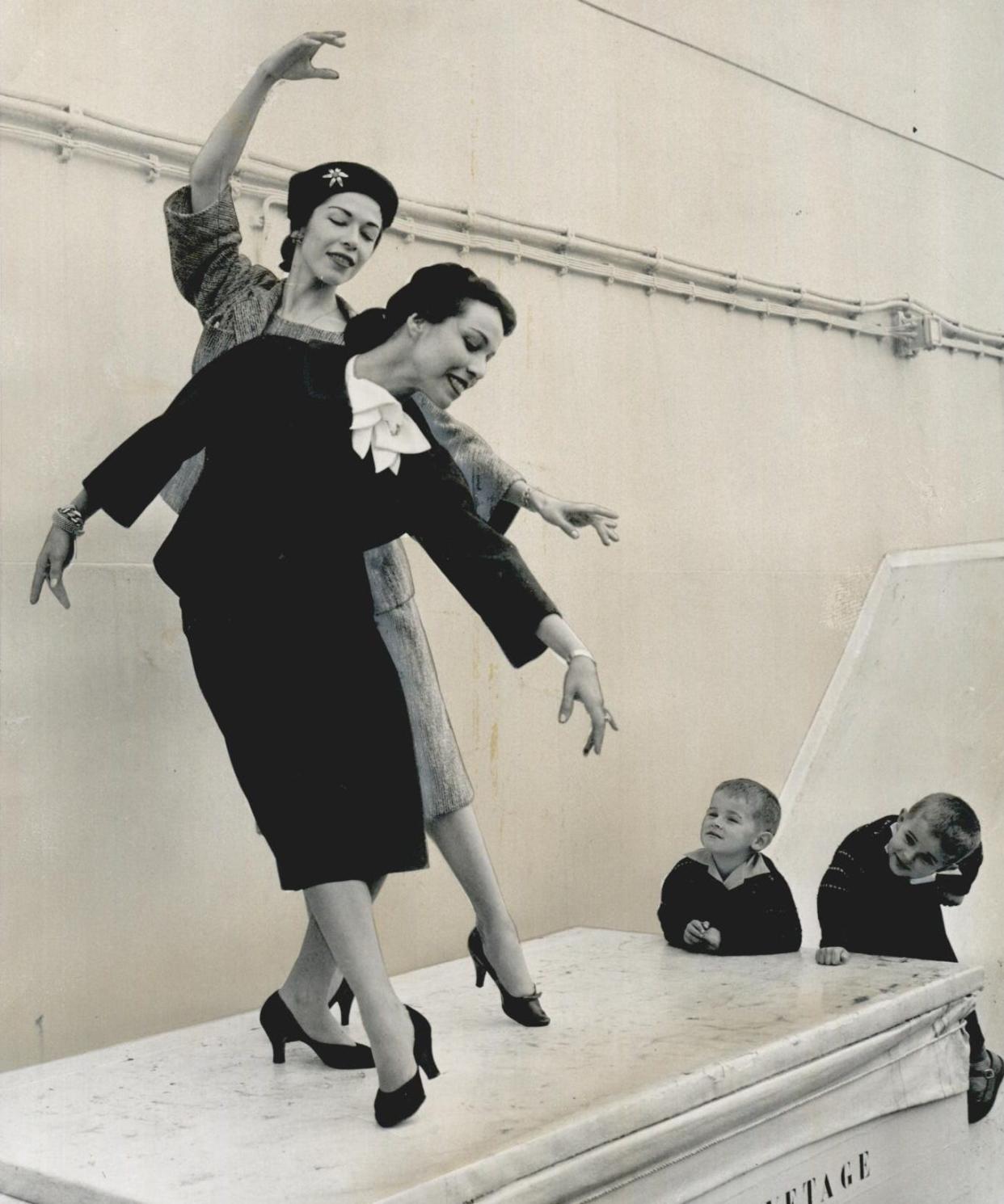
- Oops!Something went wrong.Please try again later.
- Oops!Something went wrong.Please try again later.
- Oops!Something went wrong.Please try again later.
During their lifetimes, Osage ballerinas Maria and Marjorie Tallchief made lasting impressions on stage, capturing the imaginations of audiences around the globe with their graceful performances.
Now, the trailblazing Oklahoma sisters are making their impressions in copper, nickel and bronze as their legacies are sealed on coins and in statues.
"People forget about those icons that have paved the way for all of us in different ways, like Maria and Marjorie have," said Oklahoma-based Osage dancer, writer and performer Russ Tallchief, a nephew of the Tallchief sisters.
"They were — as Native women, as ballerinas — ambassadors for America on the world stage."
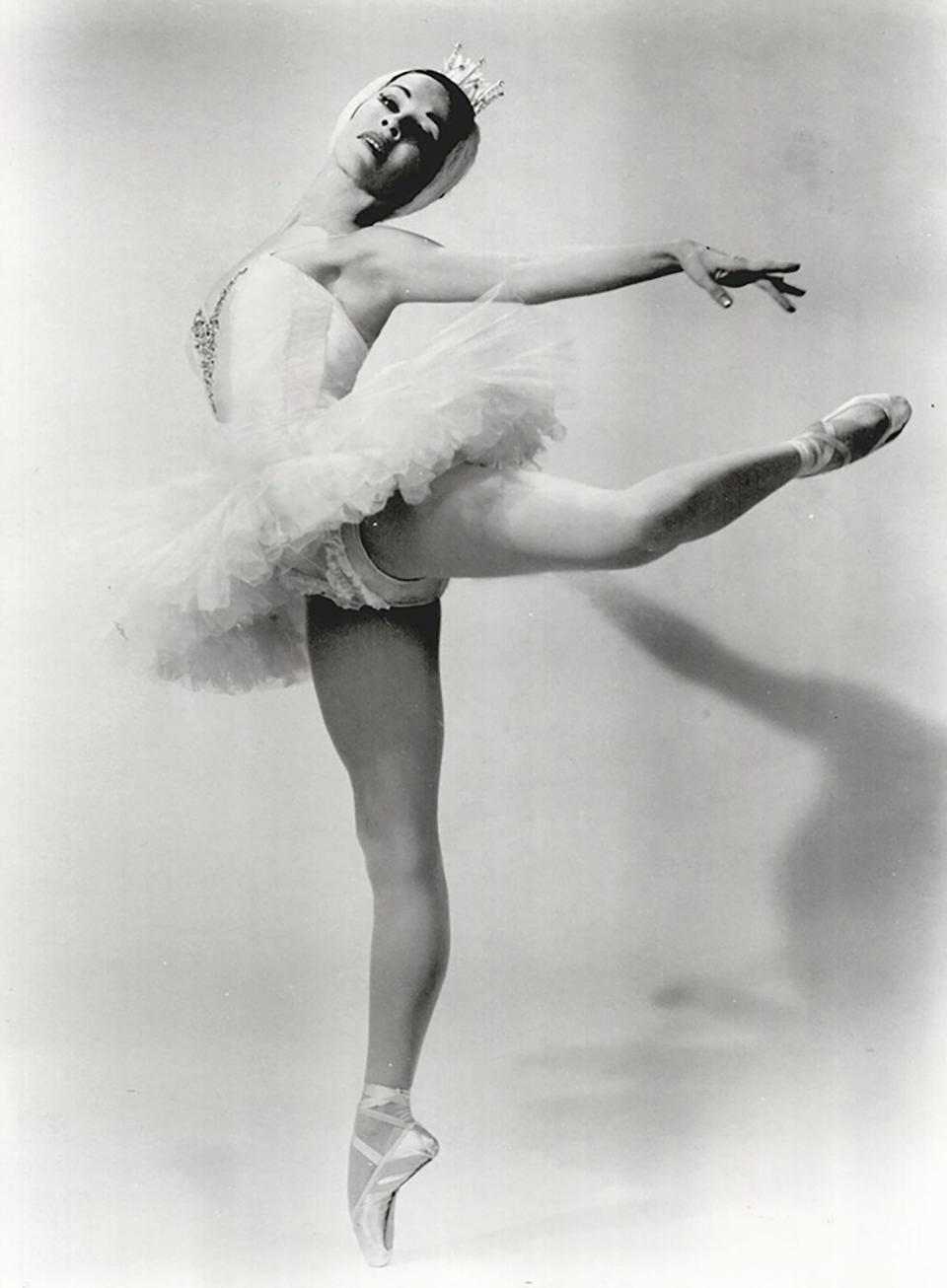
Both Tallchief sisters will be heralded from 1 to 5 p.m. Oct. 29 at the Tulsa Historical Society and Museum during a free public event titled "Historic Change: Celebrating Maria & Marjorie Tallchief."
The event will celebrate the release of a new U.S. quarter featuring Maria Tallchief, who becomes just the 10th person honored in the American Women Quarters series, as well as the unveiling of a recrafted bronze sculpture of Marjorie Tallchief, after it was stolen and cut to pieces last year in a crime that made national headlines.
Trailblazing ballet dancer Misty Copeland will be among the guest speakers at the celebration, organized by the Osage Nation, U.S. Mint, Smithsonian American Women’s History Museum and the Tulsa Historical Society.
What is planned for 'Historic Change: Celebrating Maria & Marjorie Tallchief?'
Along with Copeland — the first African American woman to be named a principal dancer for New York City's prestigious American Ballet Theatre — Kevin Gover, the Smithsonian Institution's under secretary for museums and culture, who is Pawnee, and Geoffrey Standing Bear, Osage Nation principal chief, also are expected to speak at "Historic Change."
The festivities will include a coin pour; performances by the Wahzhazhe Ballet and students from Daposka Ahnkodapi, the Osage Nation’s immersion school; and storytimes featuring Maria Tallchief's children's book "Tallchief: America’s Prima Ballerina."
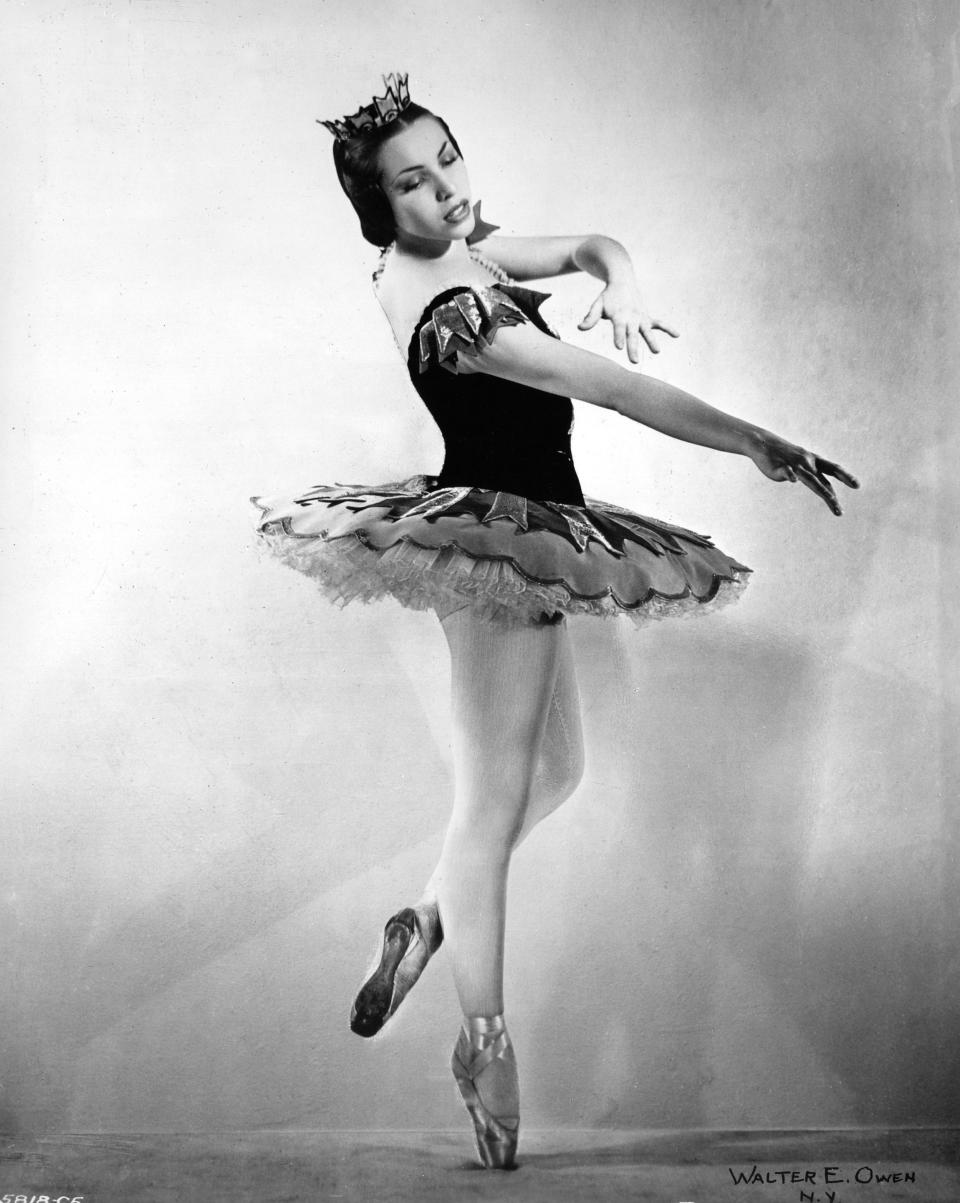
Maria Tallchief's daughter, Elise Paschen, a renowned poet and professor at the School of the Art Institute of Chicago, will do a book signing.
Special guests also will include elected officials from the Osage Nation, along with representatives from other sovereign tribal nations and U.S. Treasurer Marilynn “Lynn” Malerba, the 18th chief of the Mohegan Nation.
Tulsa Mayor G.T. Bynum is expected to proclaim Oct. 29 "Maria and Marjorie Tallchief Day."
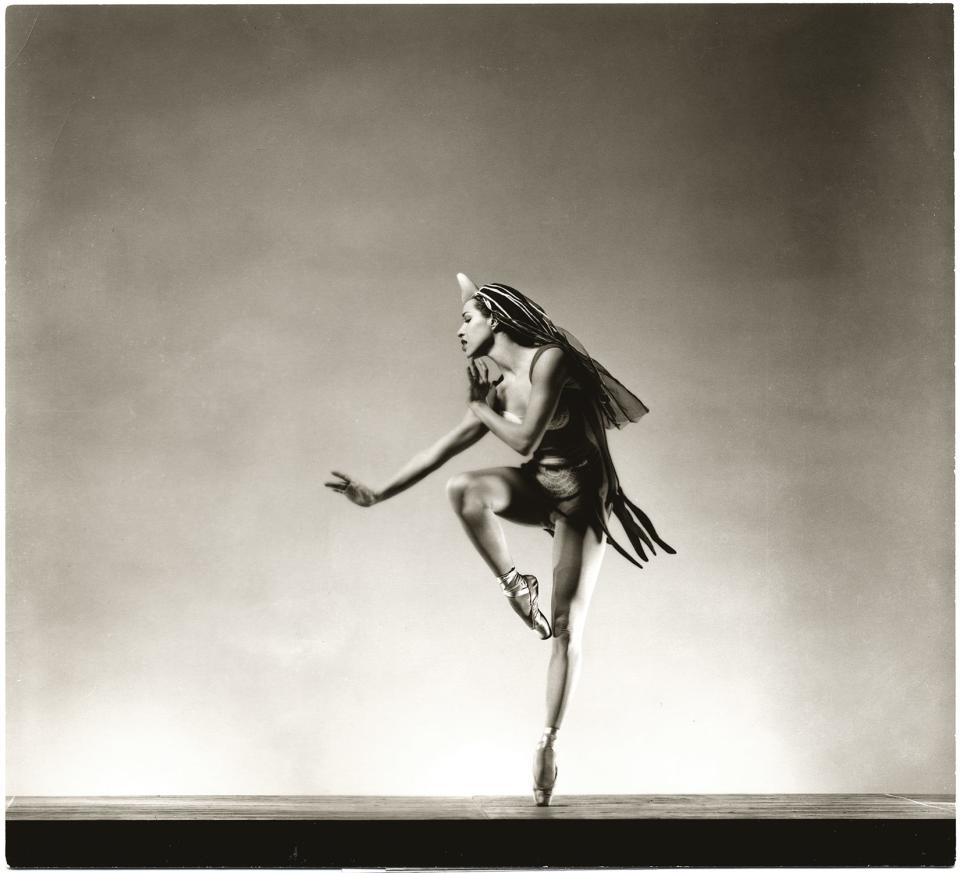
Who was Maria Tallchief?
Maria and Marjorie Tallchief are among the Five Moons — along with Yvonne Chouteau (Shawnee and Cherokee), Moscelyne Larkin (Shawnee-Peoria) and Rosella Hightower (Choctaw) — five Native American dancers from Oklahoma who rose to international stardom in the 20th century.
All five were immortalized in February on the 2023 Native American $1 Coin. With Maria Tallchief's inclusion on the golden dollar coin in addition to the new release of her own quarter, the beloved prima ballerina becomes the rare person to be showcased on two newly designed U.S. coins in the same year.
"So, history is being made yet again," Russ Tallchief told The Oklahoman. "She's so deserving of that, and she was a trailblazer in many different ways. So, I think that it represents a tribute to her and to who we are as Osage people and Native people."
Osage dancer Elizabeth Maria Tallchief is regarded as America’s first prima ballerina and credited with raising the profile of American ballet on the international stage and helping to popularize the art form in the United States. Born in Fairfax in 1925 — during the Osage Reign of Terror currently in the spotlight with the release of the movie "Killers of the Flower Moon" — she performed all over the world, starting as an apprentice with the Ballet Russe de Monte Carlo.
In 1944, Russian choreographer George Balanchine joined Ballet Russe, and he and Tallchief married in 1946. Their marriage ended in 1951, but they proved successful collaborators: In 1947, Tallchief was named the first prima ballerina of what would evolve into the New York City Ballet. Balanchine choreographed leading parts for her in "The Nutcracker," "Swan Lake," "The Firebird" and more.
She retired from the stage in 1966 and settled in Chicago, where she directed Chicago's Lyric Opera Ballet from 1973 to 1979 and the Chicago City Ballet from 1980 to 1987.
“She broke barriers as a Native American ballet dancer, exhibiting strength and resilience both on and off the stage," said U.S. Mint Director Ventris C. Gibson in a statement.
She became the first Oklahoma native lauded at the Kennedy Center Honors in 1996, and she received a National Medal of Arts in 1999.
Maria Tallchief, who died in 2013 at age 88, also was given the name "Wa-Xthe-Thonba," or "Woman of Two Standards," by the Osage Tribal Council when the state of Oklahoma declared June 29, 1953, “Maria Tallchief Day." The name was selected by her grandmother, Eliza Bigheart Tall Chief, to reflect Tallchief’s life in two worlds: an Osage woman who danced to traditional songs and a prima ballerina who danced her way into the hearts of ballet lovers worldwide.

What does Maria Tallchief's quarter look like?
Maria Tallchief is the second Native American woman from Oklahoma honored through the American Women Quarters Program. The late Wilma Mankiller, the Cherokee Nation's first principal woman chief, had a quarter released in 2022.
“Although her artistry, precision, and technical skill made her one of the most renowned ballerinas of her time, it is Maria Tallchief’s courage, perseverance, and strength of character that I hope are evident in the design,” said U.S. Mint Artistic Infusion Program Artist Ben Sowards, who designed Tallchief's quarter, in a statement.
The quarters in the program depict the women trailblazers on the tails sides of the coins. The heads side features a portrait of George Washington originally composed and sculpted by Laura Gardin Fraser to mark the first U.S. president's 200th birthday.
Sculpted by U.S. Mint Chief Engraver Joseph Menna, Maria Tallchief's quarter depicts her in a leaping pose. In addition to her name in English, her Osage name, written in Osage orthography, is included in the design.
"Just the fact that we have our orthography on the quarter is really an important act of tribal sovereignty," said Russ Tallchief.
The U.S. Mint was to start shipping the Maria Tallchief quarter on Oct. 23.
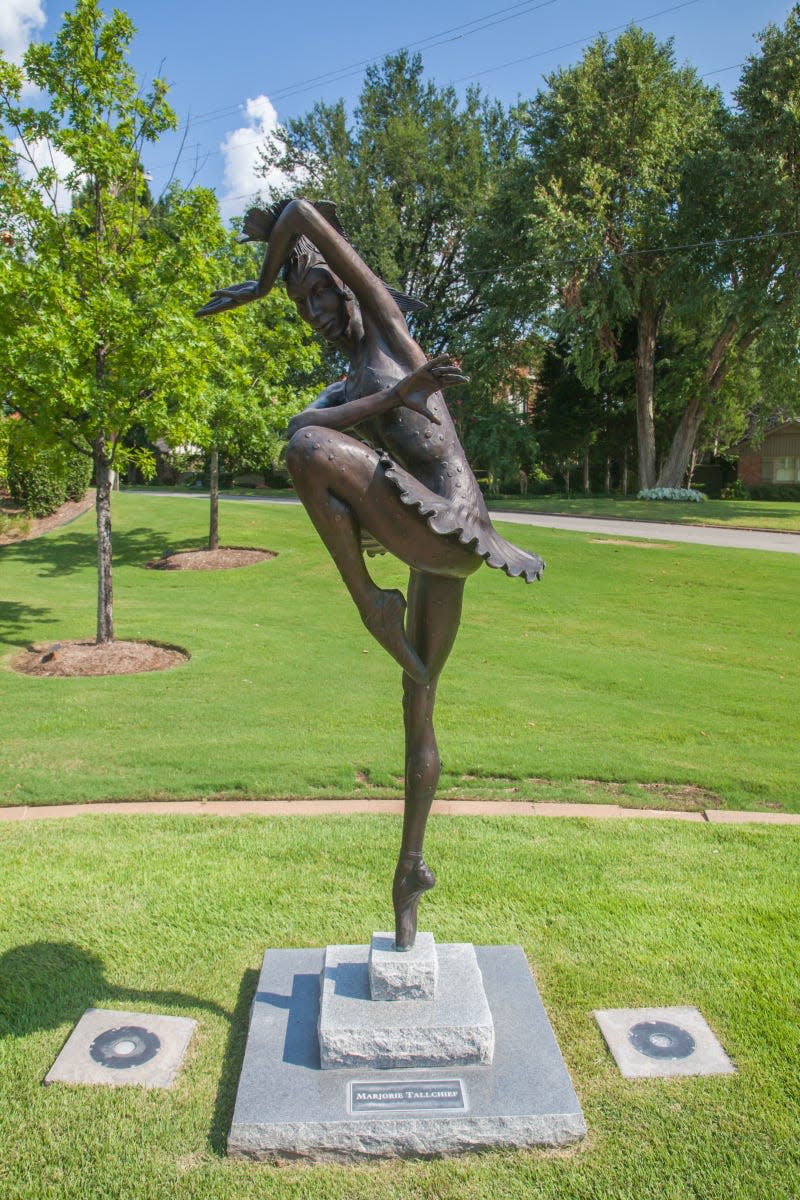
Who was Marjorie Tallchief?
Maria Tallchief's younger sister, Marjorie Tallchief was born in 1926 in Denver, Colorado, during a family vacation. She grew up in Fairfax until the family moved to California when she was a girl.
Marjorie Tallchief performed with several acclaimed dance companies and joined the Paris Opéra Ballet in 1957, becoming the first American ever to become première danseuse étoile, or "star dancer," the highest rank a performer can reach in the legendary company.
Best known for her roles in ballets like "Romeo and Juliet," "Giselle" and "Idylle" — the latter was choreographed by her husband, George Skibine — Tallchief was prima ballerina with New York's Harkness Ballet from 1964 until 1966, when she retired from the stage.
She then acted as a dance director for the Dallas Ballet, helped her sister establish and taught at the Chicago City Ballet and worked as director of dance at the Harid Conservatory in Boca Raton, Florida.
She was the last living Five Moons dancer until she died in 2021 at the age of 95.
"Maria is so well known because her career took place predominantly in the United States, and her impact on ballet was so significant in establishing the American ballet," said Russ Tallchief. "Marjorie's career primarily was in Paris at the Paris Opera Ballet, and so she's very well-known and well-remembered in Paris, but not so much in the United States."
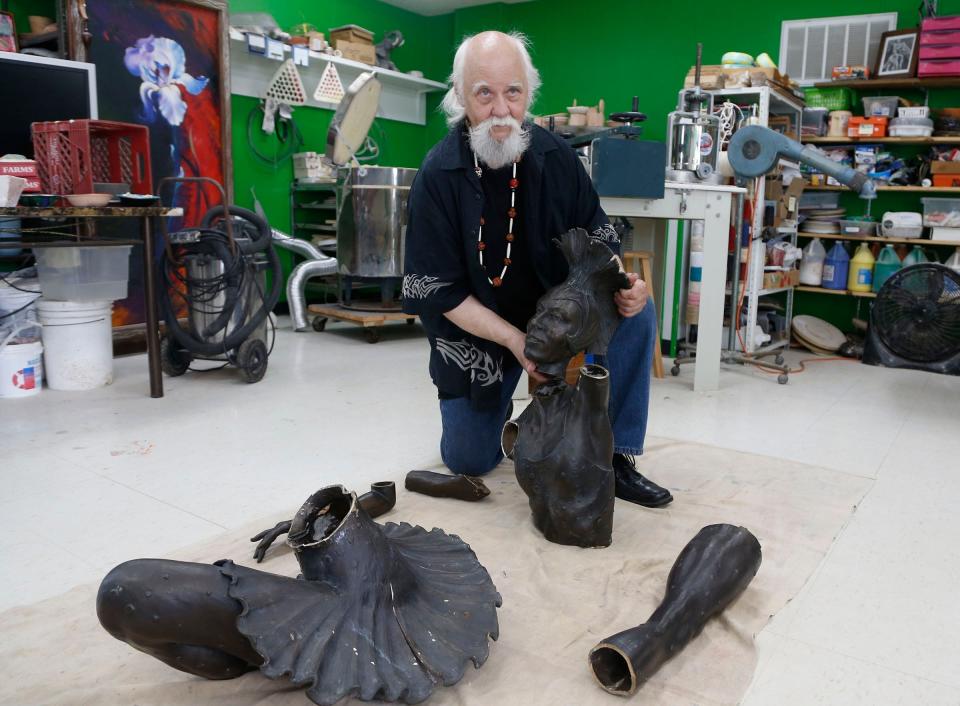
How has a stolen statue of Marjorie Tallchief been recreated?
In 1991, the Five Moons were depicted in Chickasaw painter Mike Larsen's mural "Flight of Spirit," which is prominently placed in the state Capitol rotunda. In 1997, the ballerinas returned to the state Capitol to be named Oklahoma Cultural Treasures.
A decade later, a group of bronze sculptures titled “The Five Moons” by Oklahoma artists Gary Henson and Monte England was unveiled at the Tulsa Historical Society. In spring 2022, thieves stole Marjorie Tallchief's likeness from the museum's Five Moons Sculpture Garden, and it became national news.
“People were outraged when the artwork was found in pieces,” said Tulsa Historical Society Interim Executive Director Cray Bauxmont-Flynn, a member of the Cherokee Nation, in a statement.
“The pieces had been sold at a scrap yard for a few hundred dollars.”
The culprits were later apprehended, and some pieces of the sculpture were recovered. Although England died in 2005, Henson was able to recraft the bronze, incorporating the recovered pieces.
The recreated sculpture will be unveiled and rededicated at 1:30 p.m. Oct. 29 during the "Historic Change" event.
The Tulsa Historical Society has embarked on an upgrade project that includes greater security for the Five Moons sculptures and the whole museum. Osage Casinos has signed on as a lead sponsor for the effort, according to a news release.
"I can't wait to see Aunt Margie's sculpture back," Russ Tallchief said. "There is a core group of dance folks out there that has always remembered and revered Marjorie and Maria. And I feel like this is an opportunity for us to reach new audiences ... and continue to honor their legacy."
'HISTORIC CHANGE: CELEBRATING MARIA & MARJORIE TALLCHIEF'
When: 1 to 5 p.m. Oct. 29.
Where: Tulsa Historical Society & Museum, 2445 S Peoria Ave., Tulsa.
Admission: Free.
Parking: There will be no on-site parking. Attendees should park at Cascia Hall, 2520 S Yorktown Ave., and take the provided shuttle to the museum.
Information: https://www.tulsahistory.org.
This article originally appeared on Oklahoman: Oklahoma ballerinas Maria, Marjorie Tallchief celebrated on quarter, statue

